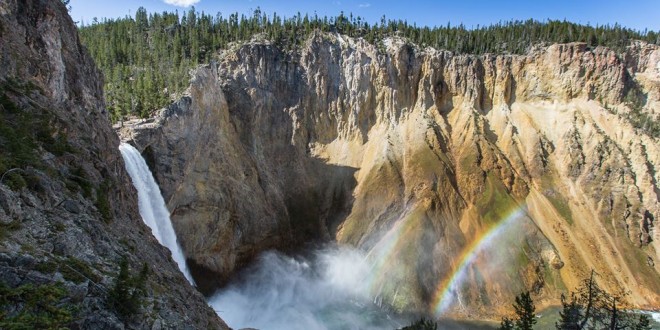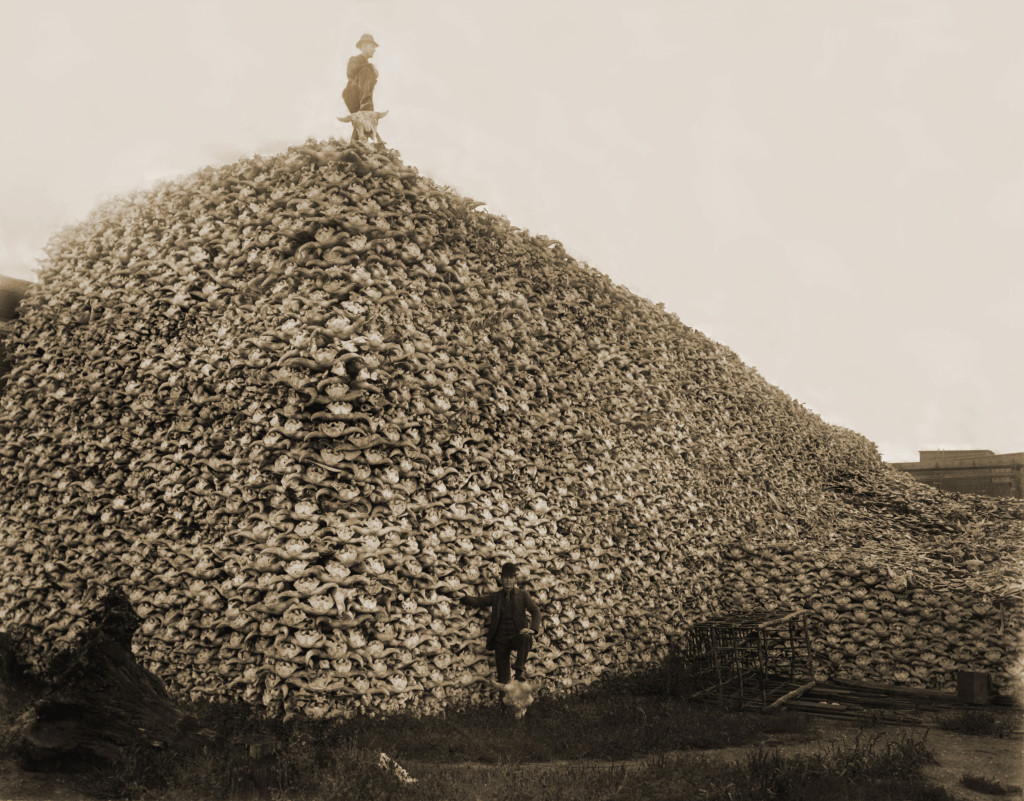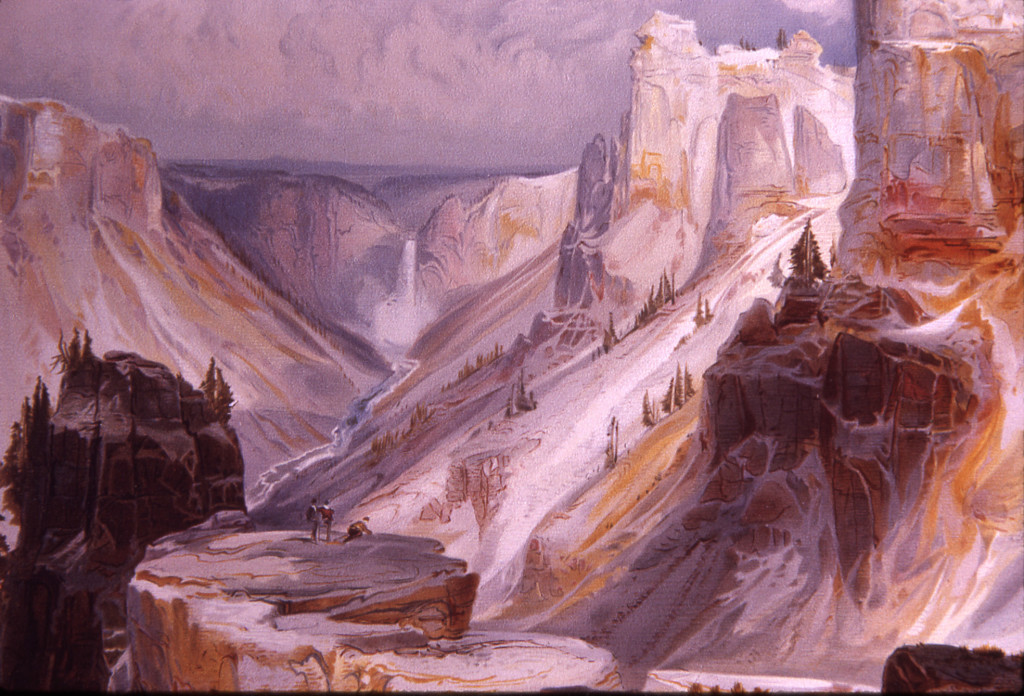What is the story of Yellowstone National Park? Well, it’s not like there’s only one story.
Indeed, unifying Yellowstone’s history into one story would be immensely difficult, given both the time span and the number of players/characters involved. We’re not just talking about the people who founded Yellowstone National Park. Or its visitors. Or any person even remotely involved in the Park for that matter. There’s natural history, geologic history, volcanic history, hydrological history to reckon with too.
And, according to Justin Farrell in The Battle for Yellowstone: Morality and the Sacred Roots of Environmental Conflict (Princeton Studies in Cultural Sociology), moral history as well.
Assistant professor of sociology in the School of Forestry and Environmental Studies at Yale University, Farrell brings a lot of scholastic discipline to his Yellowstone story. Make no mistake: in spite of the title, Farrell is deliberately attempting, with this work, to tell a tale about Yellowstone National Park. The Battle for Yellowstone is not a war story either.
I will warn you upfront: The Battle for Yellowstone is not a straight narrative. It’s an intensive study of mores and morality, framed around various “stakeholders” in the Greater Yellowstone area: rangers, ranchers, activists, citizens, visitors, admirers, and detractors, among others.
Farrell stipulates early on in the book:
To be clear, my sociological approach in this book focuses less on the individuals themselves, and more on the cultural, moral, and spiritual contexts in which stakeholders are embedded, shaping their beliefs and desires. Somewhat implicit in my argument is that, for a variety of reasons, these deeper moral and spiritual meanings are often ignored, muted, and misunderstood … Further, this book shows that when we glimpse beneath the cultural context of the Yellowstone conflict, and bring those deeper moral and spiritual dimensions to the surface, we often learn what conflict is really about—and in some cases discover roadmaps leading beyond the thick pines of technorational policy stalemate (3-4).
Sounds heady doesn’t it? Yet, despite Farrell’s monolithic mission, The Battle for Yellowstone isn’t a dry tome. Not a gray slab of academe rock. Farrell writes to be understood, italicizing his main points at the beginning of each chapter, offering conclusions at the end.
In addition, the first two chapters (“Believing in Yellowstone” and “The New (Wild) West” don’t look at Yellowstone per se but instead analyze the broad historical/cultural/sociological contexts Yellowstone National Park inhabited and continue to inhabit.
Some of The Battle for Yellowstone could even be called provocative. For instance, “Buffalo Crusaders,” a chapter devoted to bison management in Yellowstone National Park, is filled with pictures of bison hazing and slaughter: bison being lifted by bulldozers, a red dog limping with a fractured leg.
Between statistics, analysis and pictures, Farrell also interpolates interviews with various stakeholders, from ranchers to activists. Farrell is, even, a bit of a character in his book: rolling out of a sleeping bag at 4:45 a.m. to accompany activists against slaughtering Yellowstone bison, discussing fracking with a self-admitted “antithesis of a tree-hugger” over beer and roast beef sandwiches.
Farrell may be going big picture with his analysis, but like a classic landscape painting, the people are still there in The Battle for Yellowstone, albeit dwarfed by their surroundings.
Farrell’s story of Yellowstone is not inhabited by plucky rangers, ne’er-do-well poachers, vindictive ranchers, or far-seeing visionaries. Even in a chapter entitled “Between Good and Evil: The Science, Culture, and Polarization of Wolf Conflict,” heroes and villains do not emerge.
The motives of the stakeholders are never left alone. They’re picked apart and charted. In Farrell’s telling, they’re not two sides in opposition to one another, but more like many opinions on a spectrum. It’s not good and evil to Farrell, but amalgamation and amalgamation.
Finally, what makes The Battle for Yellowstone so interesting is how Farrell brings his own background to it, as a frequent visitor to the area:
One of my most vivid childhood memories of the Yellowstone are was watching one summer—with my late brother Joshua—as a resort company built a small hotel next to my grandfather’s aged cabin … As part of an extended family deeply attached to this area, I listened over the years as relatives lamented these changes brought on by expanding tourism and land development, while at the same time—and somewhat paradoxically—opposing government interference or increased environmental regulation aimed to slow the very changes they bemoaned. At its most basic level, this book is my own attempt to reconcile these family experiences with the cultural, moral, and political puzzles that came in their wake (xv).
Ideally, reading The Battle for Yellowstone critically brings you to a better understanding of your own views of Yellowstone National Park, especially compared to “the other side,” whatever “side” you belong to.
You can order The Battle for Yellowstone: Morality and the Sacred Roots of Environmental Conflict (Princeton Studies in Cultural Sociology) here.
 Yellowstone Insider Your Complete Guide to America's First National Park
Yellowstone Insider Your Complete Guide to America's First National Park








You must be logged in to post a comment.